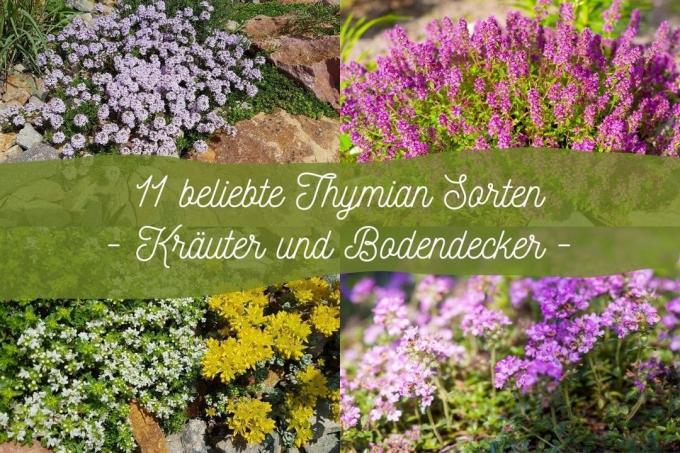
table of contents
- thyme
- Ground cover
- Herbs
- frequently asked Questions
Fresh thyme is one of the most popular herbs that has many uses. Thymians are less well known as ornamental plants with profuse blooms, those in the rock garden or as more stable race Find use.
In a nutshell
- Thyme love the sun
- low, pillow-like growth
- Thyme prefers a dry, well-drained location
- Use: culinary herb or ornamental plant
thyme
Thyme, bot. Thymus, form a genus of plants within the mint family (Lamiaceae). The genus includes a good 200 species. Most of the species are native to the Mediterranean. The ideal location for the plants is sunny. The growth of the small shrubs or bushes is pillow or cushiony. Flowering will be profuse when the plants are happy with their location. Then they develop magnificent carpets of flowers.
Note: The thyme blossom magically attracts bees.
Ground cover
Thyme, which is used as a ground cover, is usually not suitable as a kitchen herb, as its taste is often very different from that of kitchen thyme.
Early flowering thyme (Thymus praecox)
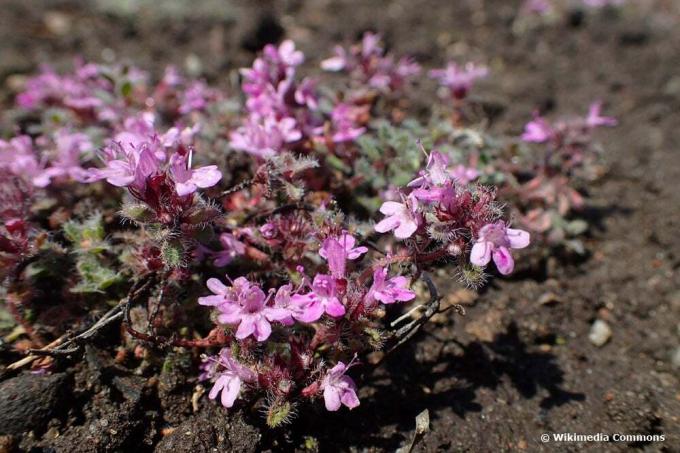
- Height: two to ten centimeters
- Spread: 20 to 25 centimeters
- Flowers: small, umbel-shaped, different flower colors (depending on the variety)
- Flowering period: May to June
- Leaves: evergreen, elliptical, small, green or gray-green (depending on the variety)
- Winter hardiness: depending on the variety, sometimes only down to minus 17.8 degrees Celsius
- Variety selection: Albiflorus, Atropurpurea, Minor (particularly low growth), Pink Chintz, Purple Beauty, Vey
Note: Among the ground cover thyme, Thymus praecox is one of the most popular species.
Island thyme (Thymus richardii ssp. nitidus)
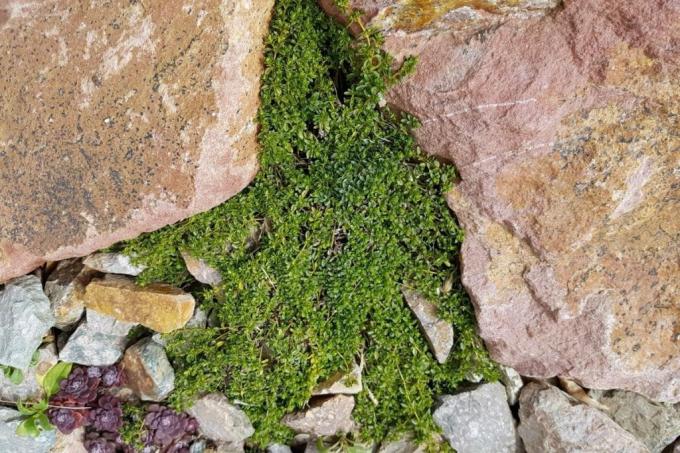
- Synonyms: Ibiza thyme
- Height: 25 centimeters
- Spread: 20 to 30 centimeters
- Flowers: small, tiered, light pink
- Flowering period: May to June
- Leaves: elliptical, small, gray-green
- Winter hardiness: down to minus 17.8 degrees Celsius (USDA zone 7)
- Variety selection: Peter Davis
Cascade thyme (Thymus longicaulis ssp. odoratus)
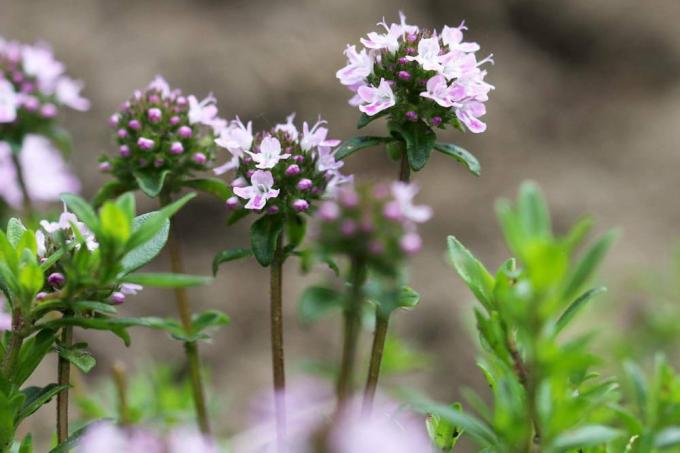
- Height: 15 centimeters
- Spread: 20 to 25 centimeters
- Flowers: small, tiered, light purple-pink
- Flowering period: April to May
- Leaves: evergreen, elliptical, small, green
- Winter hardiness: up to minus 28.8 degrees Celsius (USDA zone 5)
Cushion thyme (Thymus cherlerioides)

- Height: 10 to 20 centimeters
- Spread: 20 to 30 centimeters
- Flowers: small, panicle-shaped, purple
- Flowering period: June to August
- Leaves: evergreen, elliptical, small, green, fragrant
- Winter hardiness: down to minus 17.8 degrees Celsius (USDA zone 7)
Sand thyme (Thymus serpyllum)

- Synonyms: field thyme, quendel field cumin, rain cumin
- Height: three to seven centimeters
- Spread: 20 to 25 centimeters
- Flowers: small, umbel-shaped, different flower colors (depending on the variety)
- Flowering period: May to June
- Leaves: evergreen, elliptical, small, green
- Winter hardiness: up to minus 28.8 degrees Celsius (USDA zone 5)
- Variety selection: Albus, Magic Carpet, Coccineus
Steppe thyme (Thymus pannonicus)
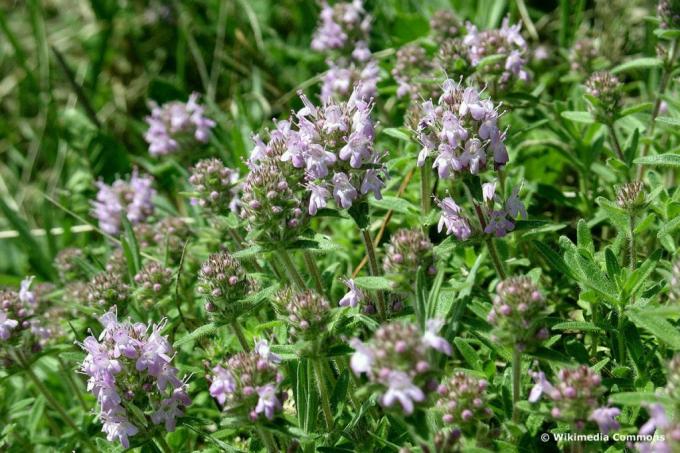
- Synonyms: Pannonian thyme, steppe quendel
- Height: 10 to 20 centimeters
- Spread: 20 to 30 centimeters
- Flowers: small, tiered, violet-pink to light red
- Flowering period: June to August
- Leaves: evergreen, elliptical, small, gray-green
- Winter hardiness: up to minus 28.8 degrees Celsius (USDA zone 5)
Herbs
If thyme is to be used in the kitchen in the form of herbs, species or Plant varieties that are explicitly referred to as culinary herbs. So there are no nasty surprises in terms of taste when using them.
Broad-leaved thyme (Thymus pulegioides)
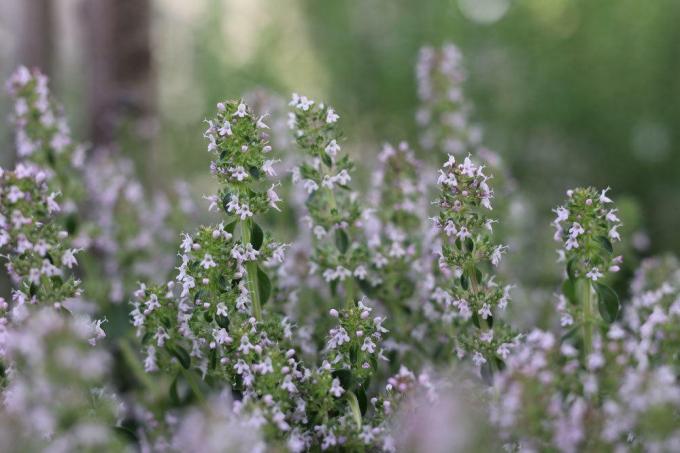
- Synonyms: Common thyme, common thyme, common thyme, medicinal thyme, field thyme
- Height: 5 to 25 centimeters
- Spread: 20 to 30 centimeters
- Flowers: small, tiered, light purple
- Flowering period: June to September
- Soil: dry, well-drained, poor in humus and nutrients
- Winter hardiness: up to minus 28.8 degrees Celsius (USDA zone 7)
- Variety selection: Aureus
Common thyme (Thymus vulgaris)

- Synonyms: Roman quendel, tripe, garden thyme
- Height: 10 to 40 centimeters
- Spread: 20 to 40 centimeters (depending on the variety)
- Flowers: small, umbel-shaped, white to light pink (depending on the variety)
- Flowering period: July to September
- Leaves: evergreen, elliptical, small, green or gray-green
- Winter hardiness: down to minus 17.8 degrees Celsius (USDA zone 7)
- Variety selection: Compactus, Tabor
Corsican thyme (Thymus herba-barona)
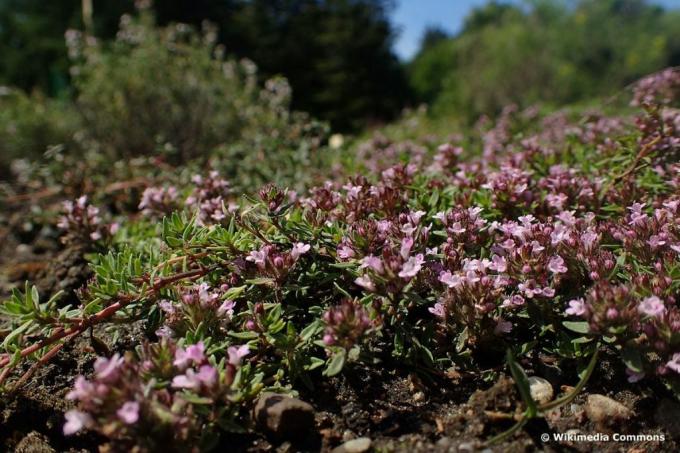
- Synonyms: Caraway thyme
- Height: 20 centimeters
- Spread: 20 to 30 centimeters
- Flowers: small, tiered, pink
- Flowering period: July to September
- Leaves: evergreen, elliptical, small, green
- Winter hardiness: up to minus 23.3 degrees Celsius (USDA zone 6)
Scaly thyme (Thymus comosus)

- Growth height: up to 15 centimeters
- Spread: 20 to 30 centimeters
- Flowers: medium-sized, umbel-shaped, lavender
- Flowering period: August to September
- Leaves: evergreen, elliptical, small, yellow-green
- Winter hardiness: up to minus 28.8 degrees Celsius (USDA zone 5)
- Variety Selection: Doone Valley
Lemon Thyme (Thymus x citriodorus)
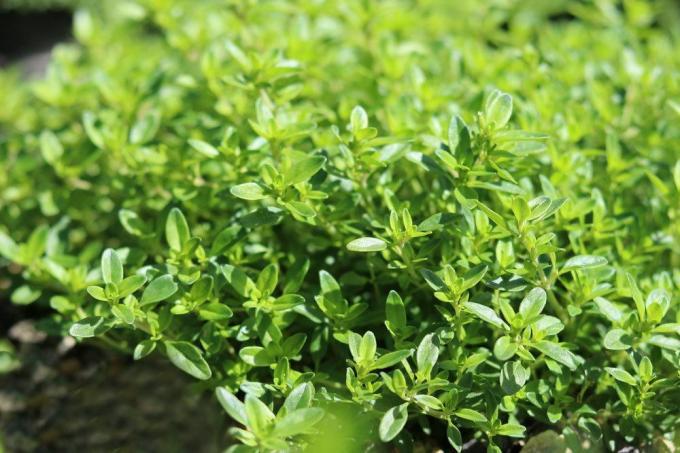
- Height: 5 to 20 centimeters
- Spread: 5 to 20 centimeters (depending on the variety)
- Flowers: small, spike-shaped, light purple
- Flowering period: June to September
- Leaves: evergreen, elliptical, small, yellowish-green or spotted, smelling of lemon
- Taste: spicy aroma with a hint of lemon
- Winter hardiness: down to minus 17.8 degrees Celsius (USDA zone 7)
- Variety selection: Golden Dwarf, Lemon, Silver Queen, Villa Nova
frequently asked Questions
Yes, sand thyme and thymus pseudolanuginosus (wool thyme) form a dense, stable lawn.
It depends on the type. Some plants can tolerate temperatures down to minus 28 degrees Celsius, some not even minus 20 degrees Celsius.
Yes, thyme, which is used in the kitchen, is suitable as a pot plant.

